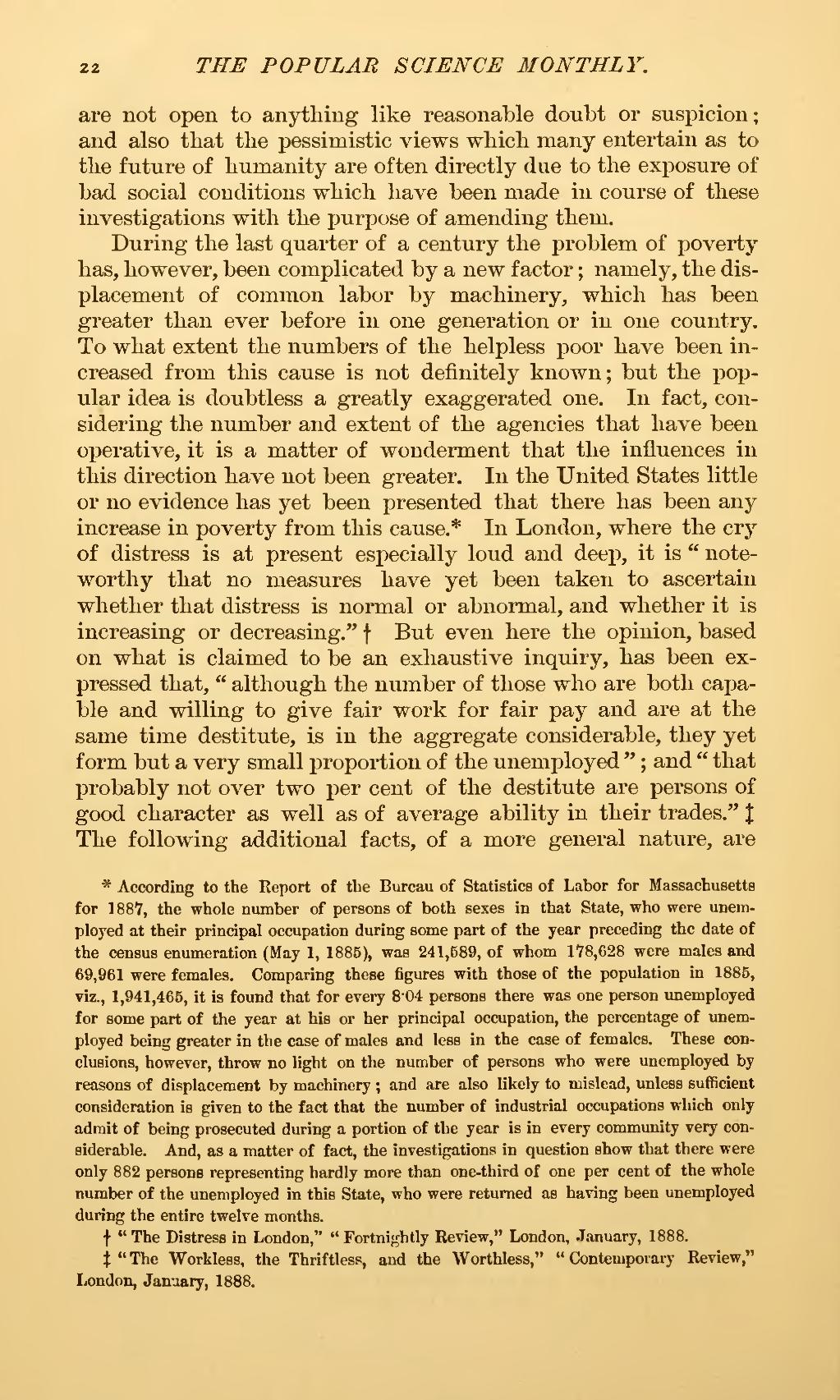are not open to anything like reasonable doubt or suspicion; and also that the pessimistic views which many entertain as to the future of humanity are often directly due to the exposure of bad social conditions which have been made in course of these investigations with the purpose of amending them.
During the last quarter of a century the problem of poverty has, however, been complicated by a new factor; namely, the displacement of common labor by machinery, which has been greater than ever before in one generation or in one country. To what extent the numbers of the helpless poor have been increased from this cause is not definitely known; but the popular idea is doubtless a greatly exaggerated one. In fact, considering the number and extent of the agencies that have been operative, it is a matter of wonderment that the influences in this direction have not been greater. In the United States little or no evidence has yet been presented that there has been any increase in poverty from this cause.[1] In London, where the cry of distress is at present especially loud and deep, it is "noteworthy that no measures have yet been taken to ascertain whether that distress is normal or abnormal, and whether it is increasing or decreasing."[2] But even here the opinion, based on what is claimed to be an exhaustive inquiry, has been expressed that, "although the number of those who are both capable and willing to give fair work for fair pay and are at the same time destitute, is in the aggregate considerable, they yet form but a very small proportion of the unemployed"; and "that probably not over two per cent of the destitute are persons of good character as well as of average ability in their trades."[3] The following additional facts, of a more general nature, are
- ↑ According to the Report of the Bureau of Statistics of Labor for Massachusetts for ISSY, the whole number of persons of both sexes in that State, who were unemployed at their principal occupation during some part of the year preceding the date of the census enumeration (May 1, 1885), was 241,589, of whom 178,628 were males and 69,961 were females. Comparing these figures with those of the population in 1885, viz., 1,941,465, it is found that for every 8·04 persons there was one person unemployed for some part of the year at his or her principal occupation, the percentage of unemployed being greater in the case of males and less in the case of females. These conclusions, however, throw no light on the number of persons who were unemployed by reasons of displacement by machinery; and are also likely to mislead, unless sufficient consideration is given to the fact that the number of industrial occupations which only admit of being prosecuted during a portion of the year is in every community very considerable. And, as a matter of fact, the investigations in question show that there were only 882 persons representing hardly more than one-third of one per cent of the whole number of the unemployed in this State, who were returned as having been unemployed during the entire twelve months.
- ↑ "The Distress in London," "Fortnightly Review," London, January, 1888.
- ↑ "The Workless, the Thriftless, and the Worthless," "Contemporary Review," London, January, 1888.
